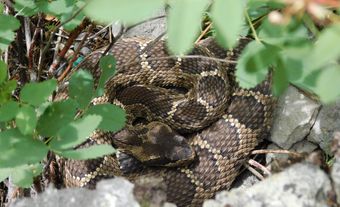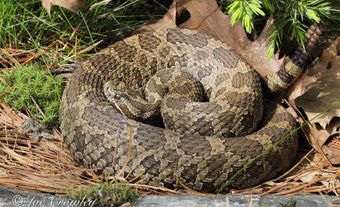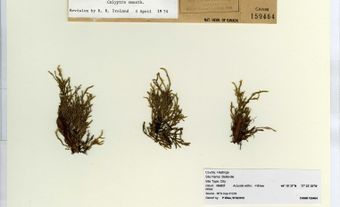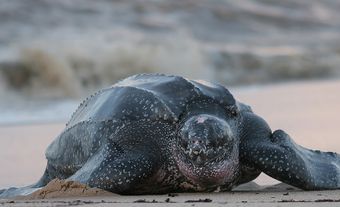The prairie rattlesnake (Crotalus viridis) is a large-bodied, venomous snake. It is one of three rattlesnake species found in Canada (a fourth is extirpated). In Canada prairie rattlesnakes are found in southern portions of Alberta and Saskatchewan. With one of the largest ranges of all rattlesnake species, their range continues along a north–south strip east of the Rocky Mountains and west of the Missouri River, into northern Mexico.
Description
Prairie rattlesnakes are large members of the pit viper family. Pit vipers have heat-sensing organs between their nostrils and eyes that are used to locate prey. Prairie rattlesnakes can grow to almost 1.6 m in length, though they are more commonly about 1 m long. They are lightly coloured in hues of brown, beige and green, and often have patches of darker coloured blotches or saddles along their back.

Habitat
Like many other animals with a large range, the prairie rattlesnake is a generalist. This means it can adapt to a wide variety of habitats. As its name suggests, the prairie rattlesnake prefers grasslands, including long and short grass, cultivated habitats and transitional zones between river and upland habitats. It is found in elevations that range from near sea level to more than 2,740 m.
To survive Canadian winters, prairie rattlesnakes live in communal dens called hibernacula. The earth in Canada’s prairies can be porous, resulting in slump blocks, abandoned burrows, erosion channels and rocky outcrops. Prairie rattlesnakes use these features to create their dens. Rarely, some den sites are man-made, such as old landfill sites, or rock piles that happen to have an opening below them. Den sites are often shared by other snake species.
Snakes begin returning to their dens in August, with most returning by mid-September. Rattlesnakes use the same den year after year. If that den is destroyed or a rattlesnake is moved too far away from its den, it may not survive the winter. They emerge from their dens between late March and early May. The rattlesnakes then disperse to summer feeding and mating grounds and to gestation sites. Prairie rattlesnakes are known to travel more than 30 km from their dens, but most will stay within 5 km.
Diet
Prairie rattlesnakes eat small rabbits, birds, amphibians, ground squirrels, voles, and mice.
Like most rattlesnakes, prairie rattlesnakes are largely ambush hunters. They lie in wait then strike, injecting their prey with a toxic venom delivered through two front fangs. The snake then releases its food, at which point the prey usually scurries off. The rattlesnake follows the trail of the injured animal using scent, and a special heat-sensing organ located between their nostrils and eyes. Scientists believe this organ allows the snake to see infrared images — images composed of radiant heatwaves. By the time the rattlesnake finds its prey, it has perished or is too weak to put up a fight. The rattlesnake consumes it, head-first.
Did you know?
During the winter, when rattlesnakes are in their dens, they may not feed again until spring. This is because as a coldblooded animal, if the snake cannot warm its body enough, it will be unable to digest the food it consumes. The meal will rot inside the animal, causing it to die if it is not regurgitated promptly.
Lifespan and Reproduction
Prairie rattlesnakes may live to be 20 years old in the wild, and 24 in captivity. It takes an average of 6 years for a female to reach sexual maturity and 3–4 years for a male. Female prairie rattlesnakes in the northern portion of their range only reproduce every second or third year. Breeding may take place at the den site in the spring or later in summer when rattlesnakes encounter one another in summer feeding grounds.
If the breeding takes place in the spring, the young will be born that year. If the mating occurs later in the season, embryonic development pauses over winter, resuming in the spring. Prairie rattlesnakes give birth to 4–13 live young toward the end of summer, often in mid–late August. However, they can deliver as late as September or October. The neonate snakes are just 22–28 cm long. They emerge equipped with fangs and venom, but cannot rattle until they shed their skin for the first time. At this point, the second segment is added to their rattle.

Threats
Prairie rattlesnakes at the northern end of their range can lose almost 14 per cent of their body mass over the winter. This leads to higher overwinter mortality rates for prairie rattlesnakes living in cold climates than for those living in warmer climates.
Due to widespread habitat loss, their slow sexual maturity and reproduction rate, and high mortality rate, prairie rattlesnakes are declining in Canada. They are considered a species of special concern by the Committee on the Status of Endangered Wildlife in Canada and the Species at Risk Act. Increasing development and urban sprawl in the Alberta cities of Lethbridge and Medicine Hat is a concentrated form of habitat loss, but losing native prairie and cattle grazing range to crop cultivation is a larger-scale threat. Highways and increasing traffic on rural roads from the energy industry (including wind turbines, solar farms and natural gas wells) heavily contributes to road mortality, especially during migration periods.
Rattlesnake Encounters and Bites
Many people live and work in prairie rattlesnake country. If someone encounters a rattlesnake, they should simply give it a berth of about 2 m. Rattlesnakes do not chase. They typically either stand their ground while slowly moving away from the threat, or quickly dart for cover. By snake standards, rattlesnakes move slowly and rely on camouflage to avoid predators. When that fails, they exhibit a defensive display that may include rising up to look larger, rattling and hissing.
Rattlesnake bites are rare. However, they do occur and can be life threatening. Most bites occur when someone accidentally steps on a rattlesnake, or reaches into an area without looking first.
While 20 per cent of bites are “dry,” meaning no venom has been injected, if bitten, people should seek medical attention without delay. Prairie rattlesnake venom is largely hemotoxic and cytotoxic, which can cause extensive tissue damage at the site of the bite. Receiving antivenin is the only effective treatment and must be administered intravenously in hospital. Allergic reactions to the bite and to the antivenom are rare complications, but can occur.

 Share on Facebook
Share on Facebook Share on X
Share on X Share by Email
Share by Email Share on Google Classroom
Share on Google Classroom



